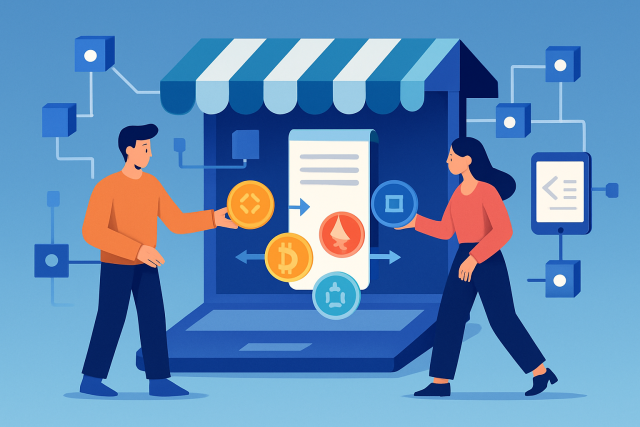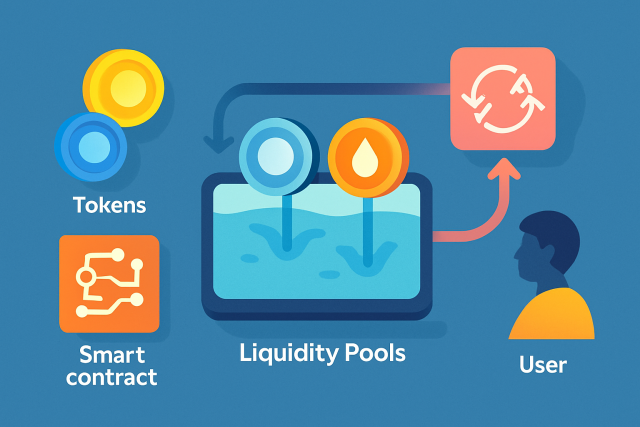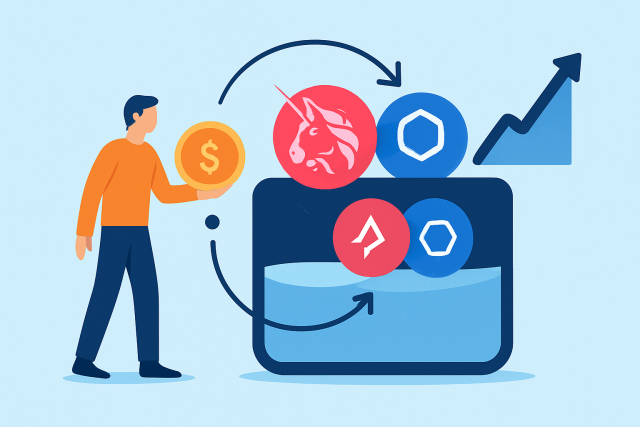Decentralized Exchanges vs Traditional Crypto Platforms

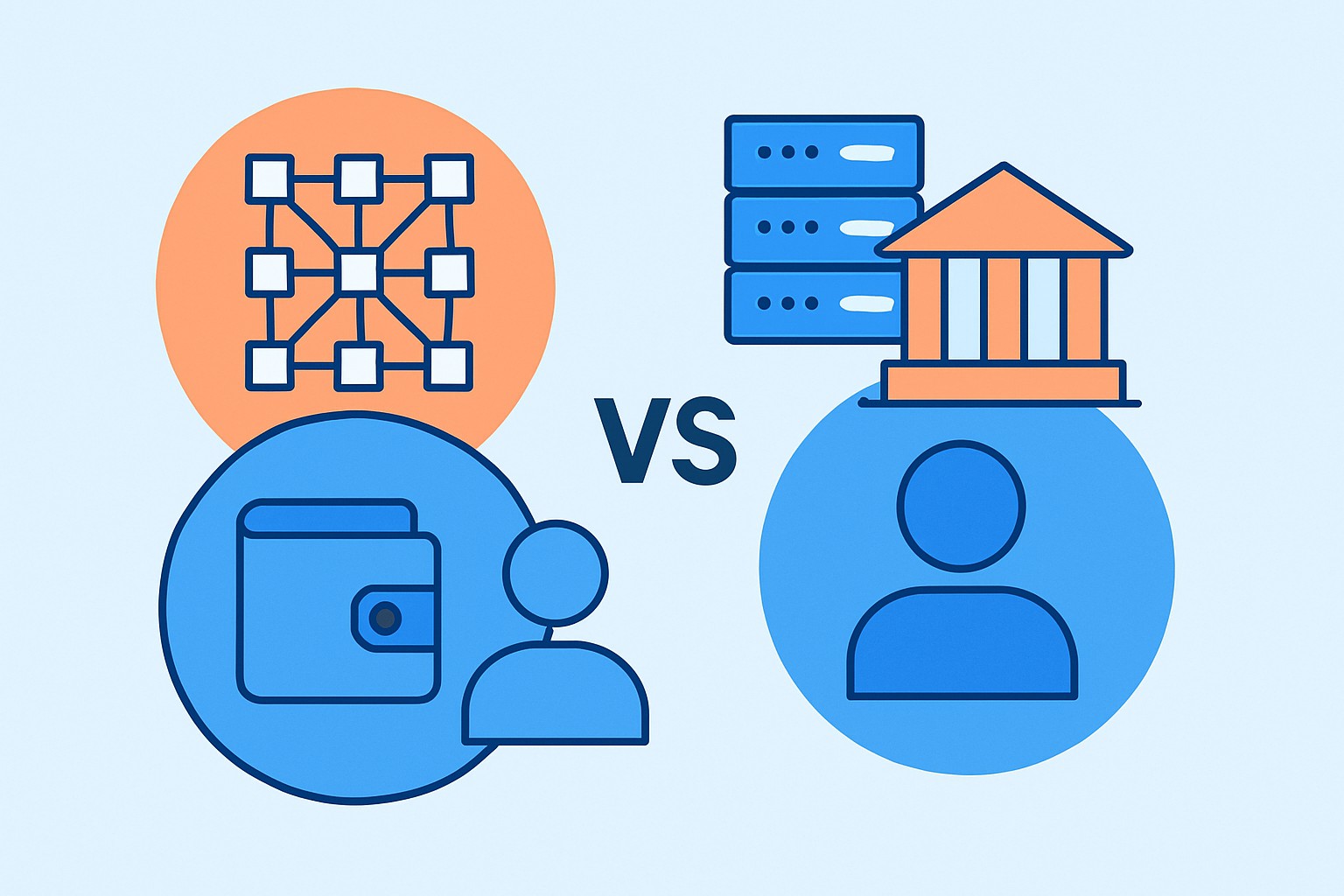
Cryptocurrency trading has really evolved with the rise of decentralized exchanges or DEXs which allow individuals to trade without relying on the usual centralized platforms. This article dives into what decentralized exchanges actually are. It weighs them against traditional crypto platforms and explores why these differences might matter a lot to users.
Taking a Closer Look at Decentralized Exchanges (DEXs) What You Should Know
Decentralized exchanges or DEXs as most people call them let users trade cryptocurrencies directly with each other—no middleman required. They operate on blockchain networks and use smart contracts—those nifty automated agreements that pretty much run themselves—to make trustless trading a reality.
- DEXs allow users to trade directly with each other cutting out the middlemen that usually slow things down.
- There’s no central authority watching over the platform or holding onto users’ funds so you’re not putting all your trust in one basket.
- Users stay in the driver’s seat when it comes to their assets which means you’re relying less on some third party's security measures.
- Smart contracts take care of executing trades and moving funds automatically and securely no hand-holding required.
- Every transaction is out in the open and recorded on public blockchains making things clear as day.
- Anyone can jump in and trade at any time since access is permissionless—no gatekeepers no waiting around.
- This decentralized setup generally lowers the chances of censorship or shutdown giving the system a bit of staying power that’s hard to beat.
What Exactly Are Traditional Crypto Platforms Anyway
Traditional crypto platforms often called centralized exchanges or CEXs act as middlemen in the trading world. They maintain order books with buy and sell offers. They juggle user accounts and hold onto users' funds like a trusted vault.
- Centralized exchanges maintain order books that bring buyers and sellers together, acting as the middleman you rely on to get the deal done.
- They provide customer support and step in to resolve disputes, which can be a lifesaver when things get tricky.
- Usually, these platforms follow regulations like KYC (Know Your Customer) and AML (Anti-Money Laundering).
- The platform holds users' funds in its wallets, so you’re entrusting them with your assets — not something to take lightly.
- Fiat on-ramps allow users to deposit and withdraw using traditional currencies without jumping through hoops.
- High liquidity helps trades happen faster and prices stay more stable, which is a win-win in the fast-paced trading world.
Important Differences Between Decentralized Exchanges and Your Everyday Traditional Platforms
| Feature | Decentralized Exchanges (DEXs) | Traditional Crypto Platforms (CEXs) |
|---|---|---|
| Control over Funds | Users hold the reins tightly through their own wallets, fully in charge of their funds | The platform takes the wheel, managing and holding user funds |
| Custody Model | Non-custodial, meaning you’re your own banker | Custodial, where the platform plays banker |
| Trading Speed | Depends on blockchain confirmations, so it can feel like watching paint dry sometimes | Typically quicker, thanks to off-chain order matching making things snappier |
| Liquidity | Comes from liquidity pools and can be a bit thin or scattered at times | Usually more robust, pooled from a variety of sources |
| Regulatory Oversight | Limited direct oversight since access is permissionless, flying under the radar | Heavily regulated, with KYC and AML keeping a close eye on things |
| Privacy | Offers more privacy by using pseudonymous wallets, giving you some wiggle room | Privacy takes a hit due to identity checks and verification |
| Security Model | Relies on smart contracts and user-controlled keys, so no single point can bring it down | Protected by centralized teams, but a single glitch could cause big headaches |
When you trade on a DEX you’re basically holding your assets in your own wallet like stashing cash in your personal safe at home. Centralized platforms act more like banks and take care of your funds for you. This setup allows CEXs to deliver quicker transactions and usually better liquidity but you’re putting a fair bit of trust in their hands. The speed of trades on a DEX depends largely on how fast the blockchain processes them.
Why Decentralized Exchanges Have Their Benefits (and Why They Might Just Be Worth Your Attention)
- Users keep full control over their assets while trading, which naturally helps cut down on custodial risks. It’s a nice way to keep your hands firmly on the reins.
- Decentralization lends the platform a sturdy backbone, making it far tougher for governments to pull the plug or impose censorship.
- Privacy often gets a boost here since many DEXs skip the whole personal identity verification hassle, something I’ve found a relief.
- The danger of massive hacks takes a nosedive because there isn’t a single central wallet hoarding all the funds like a digital dragon.
- Anyone armed with an internet connection and a wallet can dive right in thanks to permissionless access—no gatekeepers, no fuss.
- Features like liquidity mining offer users a chance to rake in rewards just by lending their tokens, turning participation into a little side hustle.
These perks make life a lot easier for everyday traders, letting them stay firmly in the driver’s seat when it comes to their finances. They can trade from practically anywhere—whether it’s their couch or a café—and dive into fresh opportunities to earn, like staking or liquidity rewards.
Challenges and Limitations of Decentralized Exchanges
While decentralized exchanges (DEXs) have revolutionized how we think about trading—putting power back in users' hands—they're not without their quirks and growing pains. Navigating these platforms can sometimes feel like wandering through uncharted waters, where issues like liquidity constraints, slower transaction speeds, and a steeper learning curve can trip up even the savviest traders. Sure, the promise of censorship resistance and enhanced privacy is enticing, but it is important to keep in mind the practical hurdles that come with this freedom. In the grand scheme, DEXs are a work in progress, balancing innovation with the stark realities of current technology and user experience challenges.
- Liquidity on many DEXs tends to be lower than on big centralized platforms. This can sometimes mean trades don’t go as smoothly or efficiently as you would hope.
- Transaction speeds depend on blockchain confirmations and are generally slower than the fast order matching you find in centralized exchanges.
- The user interface of DEXs can be daunting at first. Beginners should be prepared for a learning curve because it’s not a walk in the park.
- Smart contracts aren’t flawless. They might hide bugs or vulnerabilities that could put your funds at risk.
- Most DEXs don’t work well with fiat currencies which makes converting crypto back into cash a hassle.
- Price slippage caused by low liquidity can sneak up on you and lead to trades that aren’t as favorable as you might expect.
New users often find DEXs a little intimidating at first, mostly because of unfamiliar interfaces and concepts like managing wallets that can feel a bit like navigating a maze.
Security How DEXs Really Stack Up Against Traditional Platforms
Security in decentralized exchanges hinges on users holding their own private keys and cuts out central weak spots that hackers exploit. It puts a lot of responsibility on individuals to handle their keys carefully. Meanwhile, centralized platforms have dedicated security teams and sometimes insurance to back user funds. However, they are vulnerable because they stash large amounts of digital assets in single wallets that attract attackers like moths to a flame.
Keeping your crypto on a DEX is a bit like stashing cash in your own safe—you're the one holding the key, and that feels pretty empowering. On the flip side, using a centralized exchange is more like parking your money in a bank; sure, it’s convenient and often comes with insurance, but you have to trust the people running the show to keep your assets safe and sound.
Key Points on Regulation and Compliance You Should Keep in Mind
Decentralized exchanges navigate a tangled web of regulations. Unlike their centralized cousins DEXs typically skip the usual KYC or AML checks. This naturally raises eyebrows over legality and user protection. Regulators are rolling up their sleeves to clarify who’s responsible for what. They aim to walk the fine line between fostering innovation and keeping consumers safe.
- Centralized platforms typically have to jump through KYC and AML hoops to stay legal.
- DEXs run on global blockchain networks and often face jurisdictional challenges.
- Since DEXs are decentralized by nature, trying to apply traditional regulations is like fitting a square peg in a round hole.
- Skipping KYC helps keep user anonymity intact but can raise eyebrows among regulators.
- Legal perspectives are still evolving as regulators try to balance managing risks without stifling decentralization.
User Experience and What Traders Can Really Expect When All's Said and Done
Decentralized exchanges often require users to connect external wallets and manage their own private keys, which can be a bit of a headache for those just dipping their toes in the crypto waters. Traditional platforms tend to offer straightforward account setups and reliable customer support, making the whole process feel a lot less intimidating.
- Creating an account on centralized exchanges usually means signing up with your email and completing standard identity verification. This process can feel like a paperwork marathon.
- DEXs require users to connect wallets like MetaMask or Trust Wallet which makes the experience more hands-on and wallet-focused.
- Transactions tend to go through faster on CEXs because of their internal matching systems so there is less waiting time which is always a plus.
- Fees on DEXs can vary based on network gas costs and sometimes they end up being more expensive than the steady and predictable fees you’ll find on CEXs.
- Centralized platforms usually offer customer support via chat, email or phone so you’re not left without help.
- Educational materials are more commonly included in traditional trading platforms which helps newcomers get their bearings without feeling lost.
- Mobile app support is very strong on CEXs. Apps for DEXs are steadily improving but they are still finding their footing in the mobile space.
Choosing Between a Decentralized Exchange and a Traditional Platform for the Right Fit
Deciding between decentralized exchanges and a traditional platform ultimately boils down to what really floats your boat: more control and privacy or ease of use and liquidity above all else. Take a moment to reflect on how comfortable you feel with technology and how much risk you’re willing to shoulder. Also consider whether you need access to fiat, as this can steer you toward the option that best fits your trading goals.
Take a moment to think over your trading goals and decide how much hands-on control you want over your assets versus just having things run smoothly and conveniently.
Consider your risk tolerance, especially when it comes to holding funds and the ongoing possibility of hacks.
Reflect on your liquidity needs. You might require lightning-fast trades with minimal slippage, or you can afford to be more patient.
Look into the regulatory landscape and assess how comfortable you feel about completing KYC requirements.
Try out the user interfaces of both DEXs and centralized platforms. Sometimes the easier option might surprise you.
Start with small trades on your chosen platform. This is the best way to get familiar and build your confidence gradually.
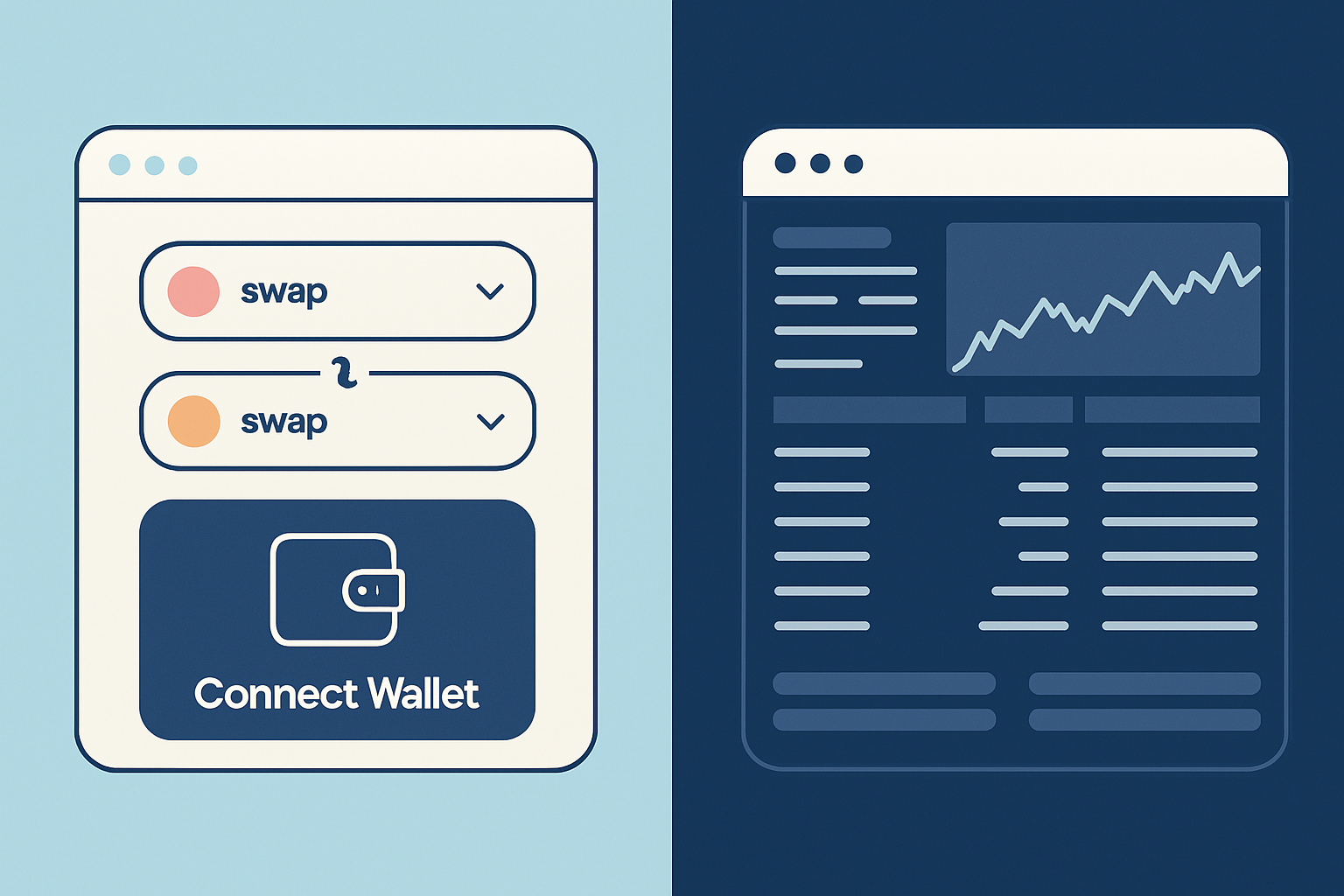
Frequently Asked Questions
Are decentralized exchanges safer than traditional crypto platforms?
DEXs cut down on custodial risks by letting users hold their own funds so there’s no big bullseye for hackers. That said, security hinges on how carefully users safeguard their private keys because it’s your money in your control. Traditional platforms offer perks like insurance but aren’t immune to massive breaches that make headlines. Both sides have their ups and downs: DEXs champion self-custody while centralized exchanges take on the security burden for you.
Why are transaction speeds slower on decentralized exchanges?
DEXs rely on blockchain confirmations to seal the deal which can feel like waiting in line when the network is swamped. Centralized exchanges use internal matching engines that whip your order through fast. Although slower, DEX trades settle right on the blockchain with no middlemen involved and stick to their decentralized roots.
Can I convert crypto to fiat money on a decentralized exchange?
Most DEXs don’t support direct fiat conversions so individuals usually swap crypto for stablecoins first or use a centralized platform to cash out. A few newer DEXs work with payment providers but fiat options are still thin compared to traditional exchanges.
Do decentralized exchanges require identity verification?
Generally, no—DEXs let you plug in your wallet without jumping through KYC hoops. Keep in mind regulations might tighten down the road. Centralized platforms require ID checks to follow financial rules which adds traceability but clips privacy.
How do I start trading on a decentralized exchange as a beginner?
Start by setting up a secure wallet like MetaMask and loading it with some crypto. Then connect it to a reputable DEX such as Uniswap. Dip your toes in with small trades to get the hang of things. Always double-check smart contract addresses and scout liquidity pools to avoid nasty surprises like slippage.
What happens if a decentralized exchange’s smart contract has a bug?
If there’s a flaw it could mean lost funds and since blockchain transactions have no rewind button you’re pretty much stuck. To be safe, use DEXs that have been audited and earned community trust. Read what others say and avoid brand-new platforms without audits. Unlike centralized exchanges, there’s no help desk to rescue your assets.


